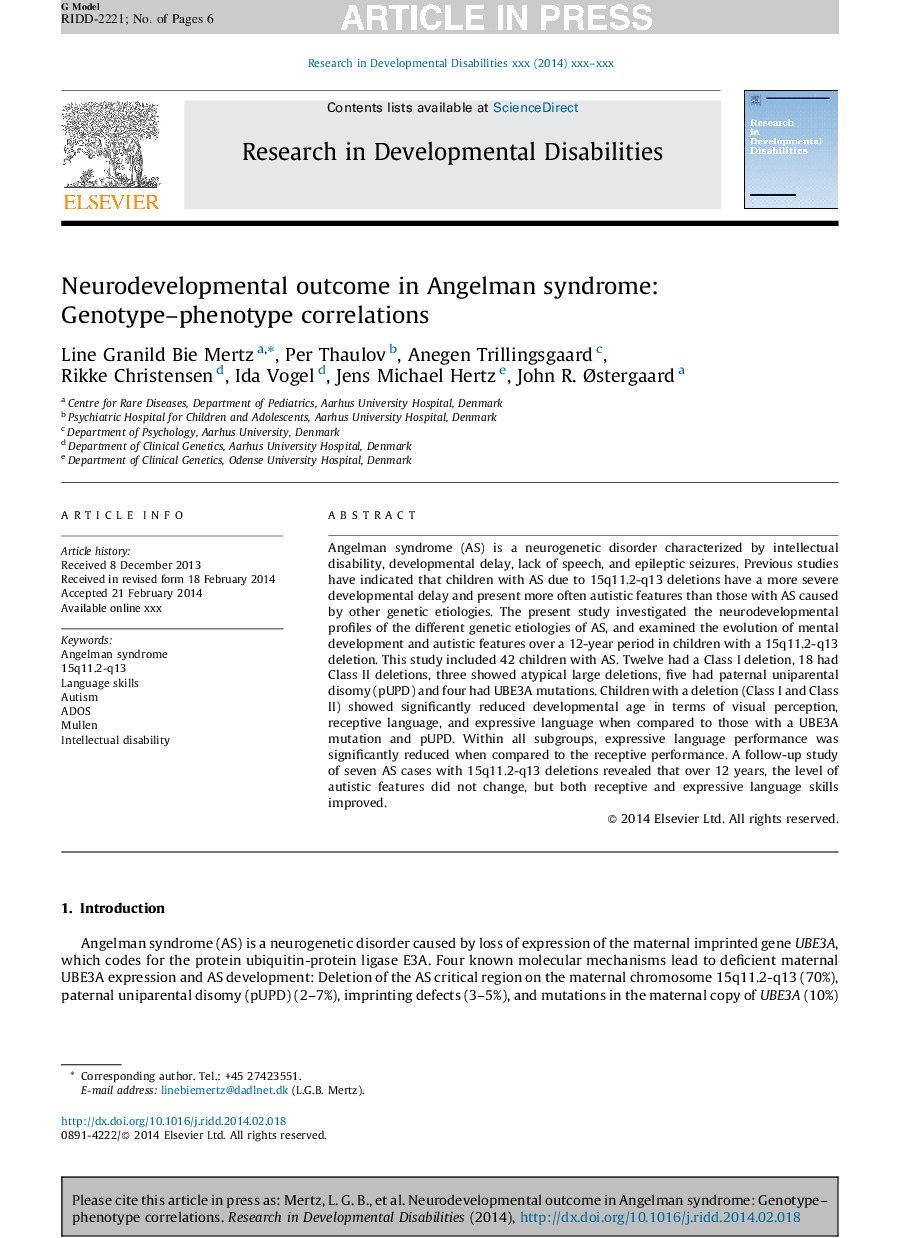| Article ID | Journal | Published Year | Pages | File Type |
|---|---|---|---|---|
| 10317252 | Research in Developmental Disabilities | 2014 | 6 Pages |
Abstract
Angelman syndrome (AS) is a neurogenetic disorder characterized by intellectual disability, developmental delay, lack of speech, and epileptic seizures. Previous studies have indicated that children with AS due to 15q11.2-q13 deletions have a more severe developmental delay and present more often autistic features than those with AS caused by other genetic etiologies. The present study investigated the neurodevelopmental profiles of the different genetic etiologies of AS, and examined the evolution of mental development and autistic features over a 12-year period in children with a 15q11.2-q13 deletion. This study included 42 children with AS. Twelve had a Class I deletion, 18 had Class II deletions, three showed atypical large deletions, five had paternal uniparental disomy (pUPD) and four had UBE3A mutations. Children with a deletion (Class I and Class II) showed significantly reduced developmental age in terms of visual perception, receptive language, and expressive language when compared to those with a UBE3A mutation and pUPD. Within all subgroups, expressive language performance was significantly reduced when compared to the receptive performance. A follow-up study of seven AS cases with 15q11.2-q13 deletions revealed that over 12 years, the level of autistic features did not change, but both receptive and expressive language skills improved.
Related Topics
Life Sciences
Neuroscience
Behavioral Neuroscience
Authors
Line Granild Bie Mertz, Per Thaulov, Anegen Trillingsgaard, Rikke Christensen, Ida Vogel, Jens Michael Hertz, John R. Ãstergaard,
